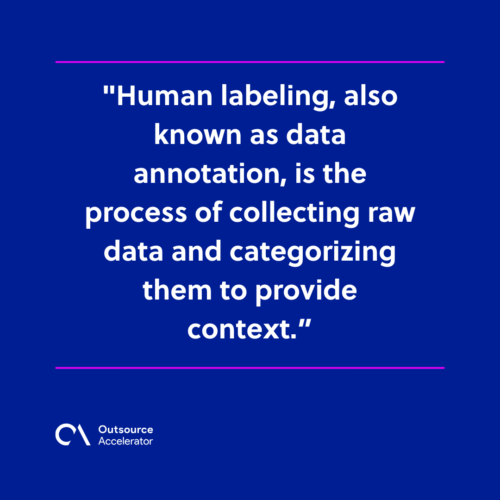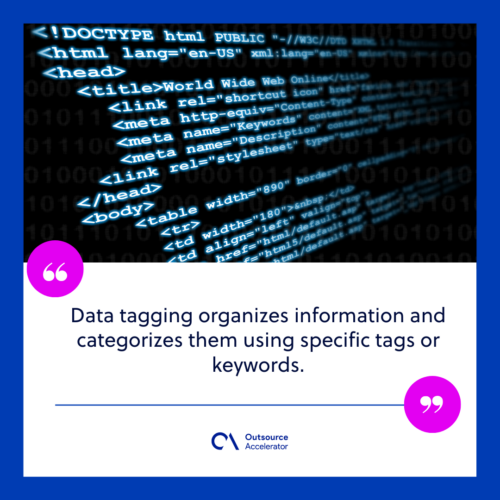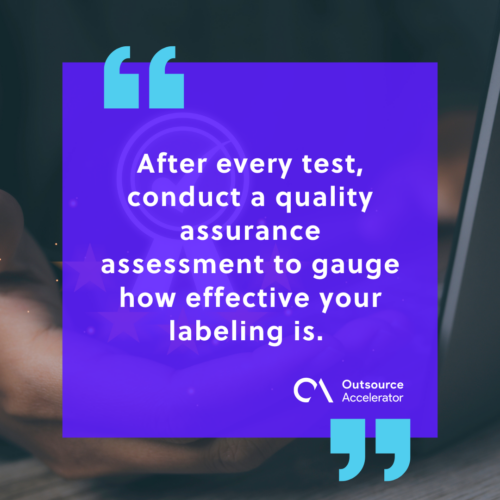Human labeling: Definition, types, and importance

Artificial intelligence continues to grow by the billions. Advancements and developments are expanding at an astonishing rate, reaching into the billions in terms of impact, innovation, and investment.
According to a study from Grand View Research, the global AI market reached $196.6 billion in 2023, and it will only go up from there.
Even though AI is being utilized all over the world by several companies, we cannot leave out the importance of human labeling. After all, AI is trained to think the way humans do and not the other way around.
This article goes deeper into human data labeling, its different types, and the best practices to follow.
What is human labeling?
Human labeling, also known as data annotation, is the process of collecting raw data and categorizing them to provide context. It helps machines to make sense of the data, leading to better applications and usage of various AI operations.
This process cannot be done by the machine itself, which is why it needs human understanding and involvement to succeed.

How does human labeling work?
Human data labeling starts with humans annotating and making judgments about structured or unstructured data. Humans act in a way that supervises the machine so that it can make correct decisions.
For example, consider a set of images that contain two matching symbols. It is the human’s job to identify which images contain the two matching symbols and label them as such.
This involves identifying images. Others can be a simple yes/no situation or as complex as identifying pixels in an image.
The machine then takes this information that the human supplied and learns it through model training. Every piece of information that humans input must lead to a desired output where the machine has learned said information.
Why is human labeling important?
Humans are at the forefront of teaching and supervising machine models to understand input data and form a sensible output.
Human labeling makes it easier for machines to recognize objects and data, leading to more correct data processing.
Without accurate labels, algorithms may produce erroneous results or fail to generalize to unseen data.
Types of human labeling
There are many different types of human labeling, each with its own unique purpose.
Natural language processing
Natural language processing is a type of AI method that teaches computers and machines to understand human speech and text.
This is one of the most common applications of AI and has been used in different ways in our everyday lives, such as spellcheck and digital phone calls. It is used for more advanced processes, such as the following:
- Smart assistants
- Sentiment analysis
- Data analysis
- Topic modeling
Data tagging
Data tagging organizes information and categorizes them using specific tags or keywords. This is a common practice used in e-commerce as it helps users find the most relevant or related products.
Some examples of data tagging include the color or shape of the product or any kind of easily distinguishable detail that makes the product easy to search for.

Image and video processing
A similar process of data tagging can be seen in image and video processing. This type of labeling involves taking an image or video and extracting information from it in order to make sense of it.
Google’s reverse image search is one of the many applications of this process. Object detection, facial recognition, and event tracking in motion pictures all fall under this type of processing.
Data digitization
Data digitization is a useful process that involves converting analog documents into a digital format, making it easier for the machine to process.
Several industries that have a high volume of documents can benefit from this process, such as financial institutions, large corporations, or medical organizations.
Best practices for human labeling
Your team can perfect human data labeling by internalizing these best practices:
Collect diverse data
When training your AI model, you want to input as much data as possible; the broader the range and types of data, the better. After all, machines work best when they have a lot of information to go off of.
For example, what if you train your AI model to write a story in English, but a non-English speaker cannot understand it?
To look at another example, how can you train a self-driving car to drive in the mountains if you only input information from the city?
You must train your model to learn from different scenarios to increase its adaptability and usage opportunities.
Be as specific as possible
Remember to keep data as accurate and precise as possible. The more specific the piece of data is, the more the machine will make sense of it. Doing so will reduce ambiguity and vague results.
You can achieve this through a clear and well-thought-out annotation process. Ensure that the data you collect is relevant to avoid confusion.
Quality assurance process
After every test, conduct a quality assurance assessment to gauge how effective your labeling is. You can do this by evaluating your human labeling team and their work and identifying areas for improvement.
You can also conduct a targeted QA test that looks at specific terms or inconsistencies between annotations.

Harnessing the power of human labeling
AI and machine learning is a long and resource-extensive process, but proper labeling and training on the part of human developers and engineers make it easier and less time-consuming.
The possibilities are limitless when it comes to utilizing artificial intelligence. Implementing a solid labeling system will only accelerate the process.







 Independent
Independent




